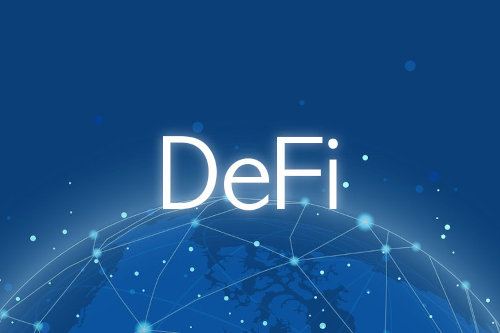In the world of finance, a new era is dawning – one marked by the rise of Decentralized Finance, or DeFi. This paradigm shift, moving away from traditional banking systems towards blockchain technology, is redefining how we view and interact with financial services.

In this comprehensive exploration, we will explore the intricacies of DeFi, uncovering how it is fundamentally transforming the financial landscape and what this transformation means for the future of banking.
The Traditional Banking System: An Age-Old Institution
For centuries, traditional banks have stood as the cornerstone of the financial world. They have acted as intermediaries in financial transactions, providing an array of services such as loans, asset management, and payment processing.
However, this system is often criticized for its centralized nature, lack of transparency, and accessibility issues, particularly in underbanked regions where millions are left without access to basic financial services.
Enter Blockchain and DeFi: A Decentralized Revolution
Blockchain technology, the bedrock upon which DeFi is built, offers a decentralized approach to financial transactions. Unlike traditional banking, DeFi operates without central authorities or intermediaries.
Through blockchain, DeFi applications (commonly referred to as dApps) provide a wide range of financial services, from lending and borrowing to insurance and asset trading, all in a transparent, secure, and inclusive manner.
Key Features: A Blueprint for Transformation
- Decentralization: It’s built on decentralized networks, primarily Ethereum, ensuring that no single entity controls the network. This decentralization instills trust and reduces the risk of manipulation.
- Accessibility: It opens the door to financial services for people without access to traditional banking. With a smartphone and an internet connection, anyone can participate in the DeFi ecosystem.
- Transparency: All transactions on DeFi platforms are visible on the blockchain, promoting transparency and trust. Users can track their funds in real-time, eliminating hidden fees and unexpected surprises.
- Interoperability: DeFi protocols and platforms are often designed to be interoperable, increasing the range of services and functionality. This interconnectedness fosters innovation and collaboration within the ecosystem.
The Impact: Revolutionizing Finance
The influence of DeFi, on the world of finance cannot be overstated. It represents a seismic shift in the way financial services are conceptualized, accessed, and executed.
Let’s delve deeper into the multifaceted impact of DeFi on traditional finance, highlighting the transformative power it wields:
- Cost Efficiency: It employs blockchain technology to drastically reduce transaction costs and make financial services more affordable. Smart contracts automate processes, eliminating intermediaries and reducing fees, particularly in lending and borrowing.
- Financial Inclusion: DeFi’s internet-based accessibility empowers individuals worldwide, including the unbanked and underbanked, by providing access to savings, loans, and investments, irrespective of their location.
- Eliminating Middlemen: By utilizing smart contracts to automate transactions, DeFi removes intermediaries, accelerating processes, lowering the risk of errors and fraud, and placing greater control in the hands of users.
- Global Accessibility: It operates 24/7 and transcends geographical borders, facilitating cross-border transactions with minimal delays and fees, benefiting users worldwide.
- Transparency and Trust: DeFi’s transparency, achieved through blockchain recording of all transactions, fosters trust, reduces fraud, and allows users to independently verify system integrity.
- Innovative Financial Products: DeFi’s open-source, programmable nature has led to the creation of novel financial products and services, such as yield farming and decentralized exchanges, offering users unique earning opportunities.
- Risk and Volatility: Despite its benefits, DeFi is susceptible to cryptocurrency volatility, necessitating user caution and research to navigate potential risks associated with price fluctuations.
Challenges and Considerations: The Path to Maturity
While DeFi presents a multitude of opportunities, it also comes with its fair share of challenges. Regulatory uncertainty, security concerns, and the volatility of cryptocurrencies are key issues that must be addressed for the continued growth of the ecosystem. Furthermore, the user experience in DeFi can be complex, potentially hindering widespread adoption.
Simplifying and enhancing the usability of DeFi platforms will be pivotal in attracting a broader user base.
The Road Ahead: Towards a New Financial Landscape
As DeFi continues to grow, it may well coexist with, or even transform, traditional banking. This integration could lead to a more inclusive, efficient, and secure financial system that serves the needs of a broader global population. However, for this potential to be fully realized, critical issues such as regulatory clarity, improved security measures, and user-friendly interfaces must be addressed.
Conclusion: A New Era Dawns
The shift from banks to blockchain represents a significant milestone in the evolution of finance. DeFi challenges the status quo, offering an alternative that is decentralized, transparent, and accessible. As this sector matures, it holds the promise of reshaping the financial landscape, making it more inclusive and efficient for everyone.
The future of finance is being rewritten, and DeFi is at the forefront, leading us into a new era of financial freedom and innovation.


